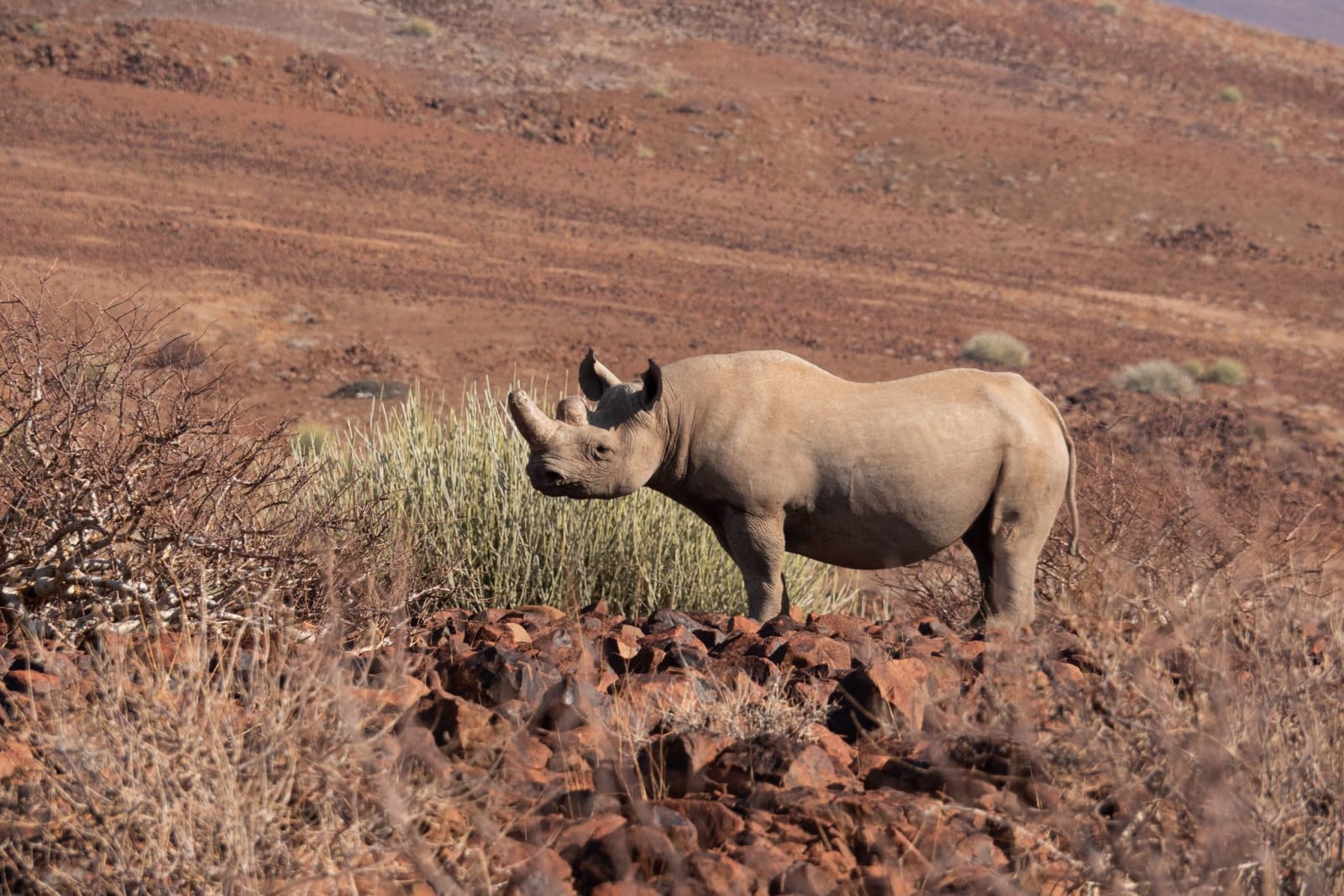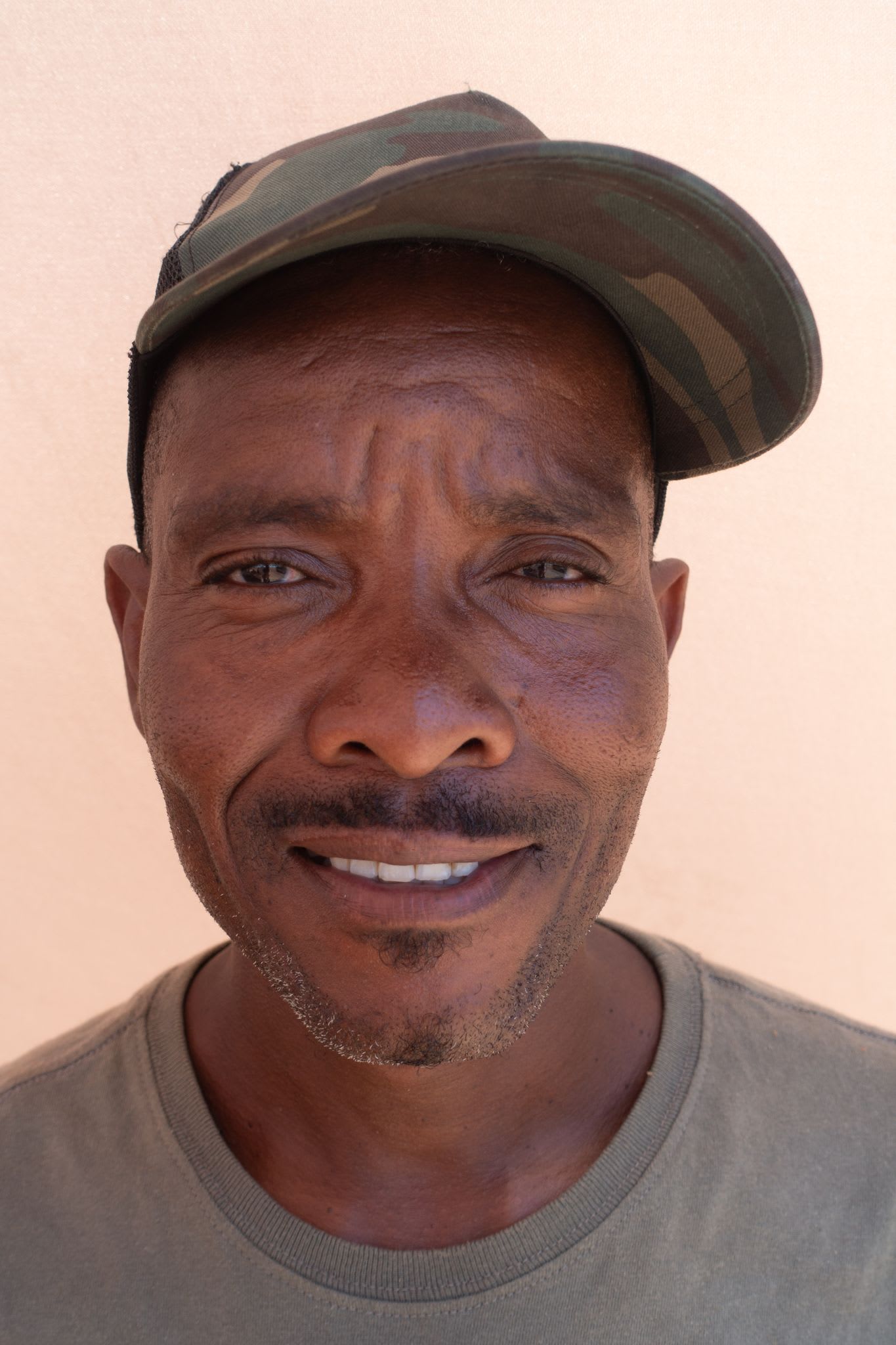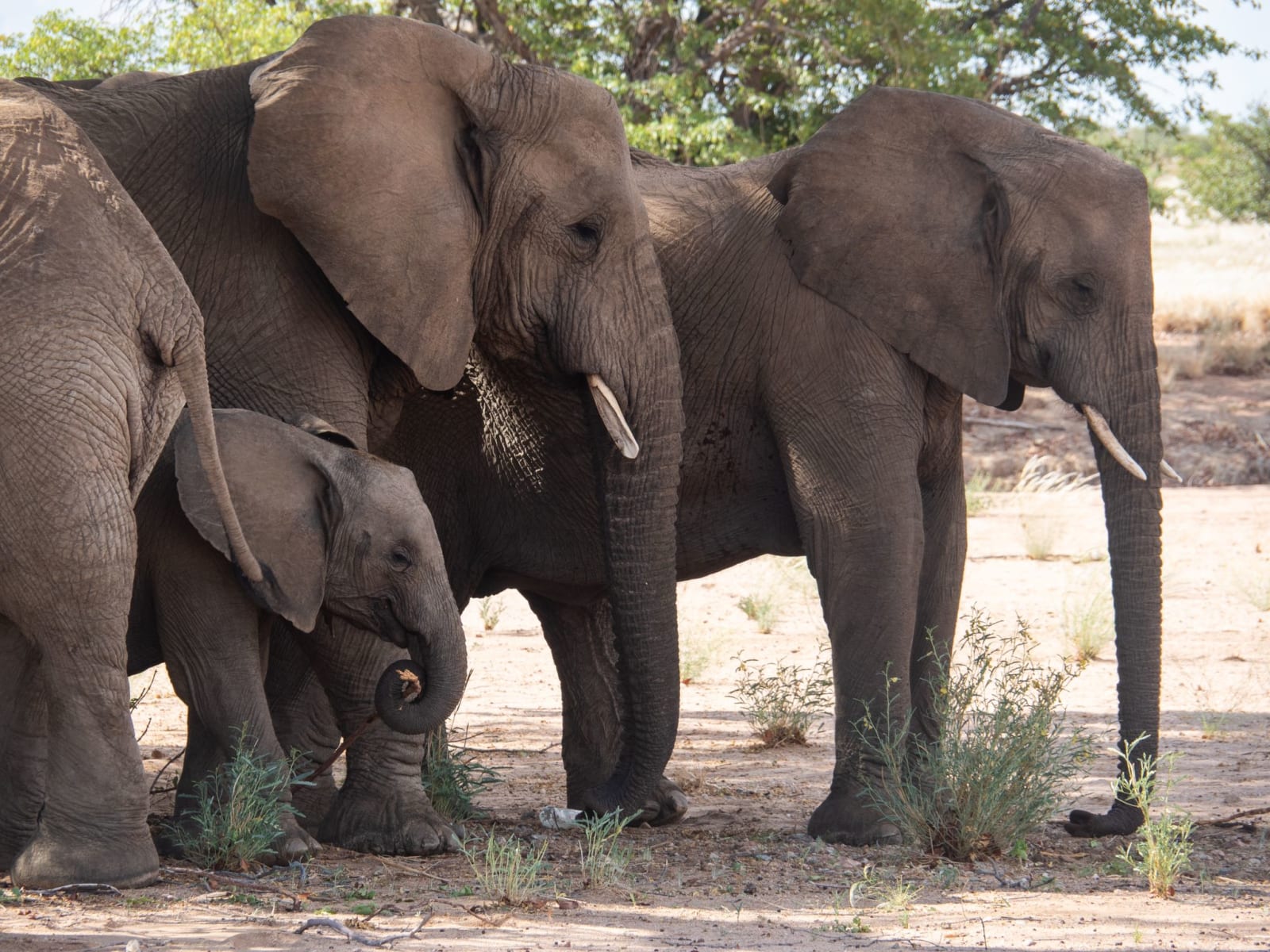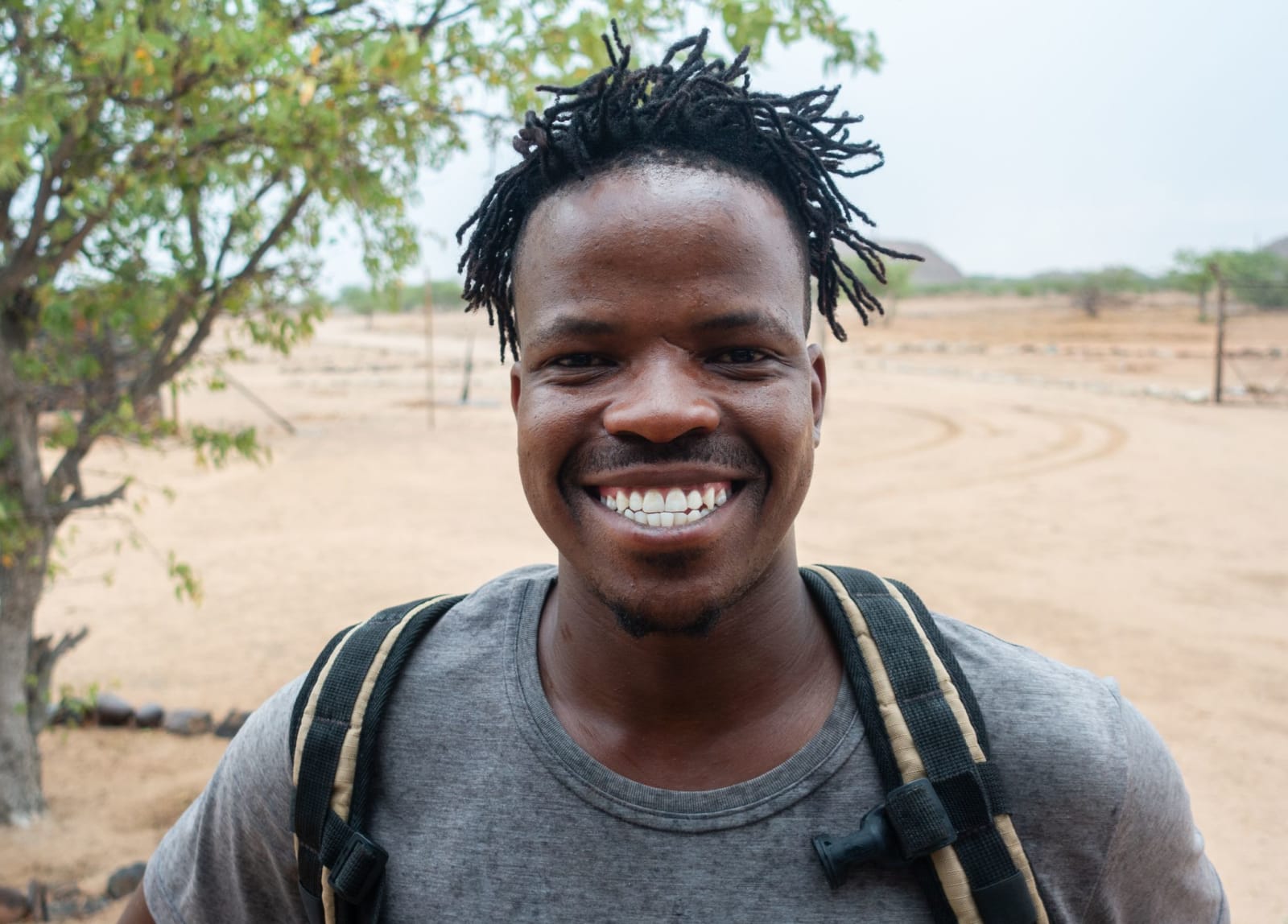
New droppings. Footprints in the Namib Desert sands. It won’t be long before we find the black rhino. Conservation officers Stefanus Ganuseb, aged 42, and Fritz Hoeb, at 45 years old, are tracking on foot, carrying binoculars and a camera. They have an armed police officer for company.
Next, they come across a young male rhinoceros called "Arthur" atop a far-off ridge. To ensure their smell isn’t picked up, the crew examines which way the breeze is blowing before carefully moving towards the creature. Normally, such encounters tend to conclude at around 100 meters away from them. However, today “Arthur” approaches nearer without spotting the individuals who remain undisturbed as he continues his peaceful feeding on lush clumps of euphorbia shrubs. The men snap photographs and complete an encounter report form for Save the Rhino Trust, the wildlife conservation organization.
The primary objective of Save the Rhino Trust is to safeguard the black rhinoceros against poaching," explains Lesley Karutjaiva, who at 47 leads the organization’s branch based in Palmwag located in northwest Namibia. Tours depart from the nearby lodge with the purpose of spotting these animals.
What many tour participants aren’t aware of is that, were it not for the Save the Rhine Trust, these rare creatures might no longer be observable. Thus, tourism benefits from the endeavors of this organization which monitors a region spanning 25,000 square kilometers. Karutjaiva approximates the number of rhinos to be close to 200 and expresses regret over the lack of government funding for their vital work.
Controversial dehorning
He explains that they don’t get any funding,” adds “and mentions we have just six vehicles for this vast region.” He points out that the state solely offers police accompaniment for these missions. Every other expense – whether it’s salaries for the staff, training programs, or even removing horns from the creatures – relies entirely on charitable contributions.
Karutjaiva views dehorning, similar to what was done with "Arthur," as a mixed blessing. Essentially, this procedure aims to make rhinos less appealing targets for poachers since their horns—weighing around 3.5 kilograms each—can sell for over $200,000 on the illegal market. However, Karutjaiva points out that this also leaves the animals vulnerable because they lose their primary means of defense against predators.
Furthermore, dehorning does not entirely ensure prevention. "Poachers seize every part, regardless of how small it may be," Karutjaiva remarks, highlighting grim data. Since 2012, thirty-five rhinos have been killed by poachers. "Additional contributions would greatly help us improve our efforts and enable us to employ more staff members."
For him and his fellow professionals, the drought in Namibia is a disaster due to the permits granted for hunting wildlife. The debate revolves around whether these measures aim to provide food for the hungry local populace or, as some animal rights organizations argue, cater primarily to rich foreign game hunters seeking recreation.
The humans-elephant conflict
In the meantime, the organization Elephant-Human Relations is monitoring approximately 200 kilometers of routes southeast of Palmwag with the aim of safeguarding desert elephants. As before, tourists can benefit from this effort as they are permitted to join the patrol teams during their rounds. Additionally, the organization receives no financial support from the government.
The phrase "desert elephant" isn't entirely accurate, according to game warden Taiwin Garoeb. He explains at age 30, "These are actually elephants that have adjusted to survive in arid conditions. They travel great lengths just to reach the nearest water source." However, he adds that this adaptation previously resulted in numerous deaths among these animals. An elephant desperate for water wouldn’t hesitate to harm local farmers and inhabitants, leading them to retaliate as well.
Therefore, measures must be implemented. Regional Manager Charles Moloto states, "We construct defensive barriers around water sources and create distinct reservoirs apart from the village settlements." This action aims to safeguard both wildlife and residents from potential conflicts with one another.
Humility before the pachyderms
"When I meet an elephant, I feel humble," says gamekeeper Garoeb, who actively helps with the campaigns. Like him, his colleagues from Save the Rhino Trust are fighting for the survival of endangered species in deserts and savannahs.
"It’s a risky task for us, yet I find it exhilarating, out in the wild," Ranger Ganuseb remarks with sparkling eyes. All those dedicated individuals working tirelessly to safeguard the animal realm remain the unsung champions of nature.



